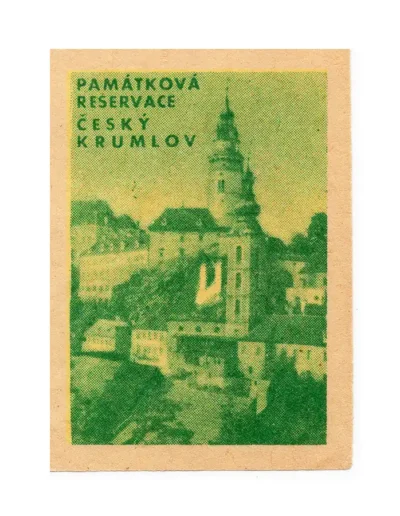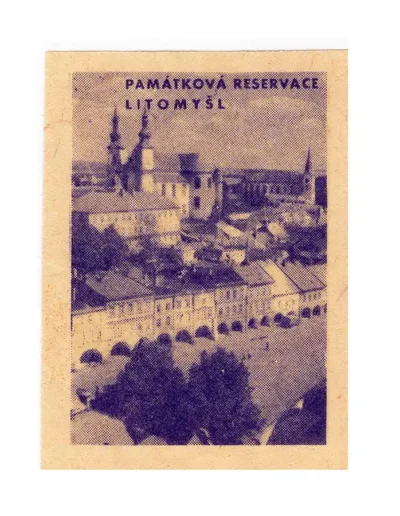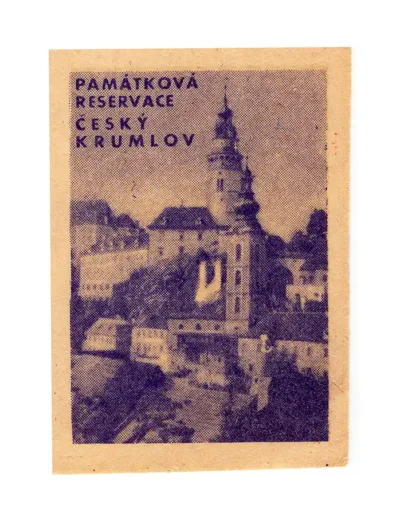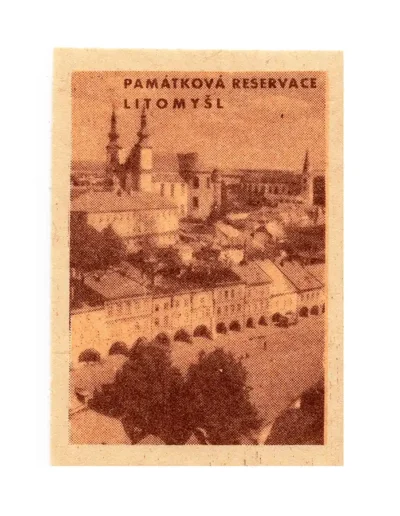Explore the rich cultural and historical heritage of Czechoslovakia through its iconic towns and landmarks. From the medieval charm of Český Krumlov and the Renaissance beauty of Litomyšl to the Gothic splendor of Levoča and the vibrant history of Tábor, Prachatice, Litoměřice, Bardejov, and Třeboň. Discover the architectural marvels, historical significance, and cultural festivals that make these destinations a must-visit. Learn about their origins, notable landmarks, and what makes each town unique in this comprehensive guide to Czechoslovakia’s heritage sites.
Český Krumlov
Český Krumlov, a UNESCO World Heritage Site since 1992, is a gem of South Bohemia, celebrated for its breathtaking medieval architecture and stunning setting along the Vltava River. The town’s most iconic landmark, Český Krumlov Castle, was initially constructed in the 13th century by the influential Vítkovci family. Originally designed as a defensive fortress, the castle has evolved over centuries into a magnificent residence reflecting Gothic, Renaissance, and Baroque architectural styles. It was later owned by the noble Rosenberg family, followed by the Eggenbergs and Schwarzenbergs. Today, the castle, with its extensive gardens, is under the ownership of the Czech state. The castle complex includes several museums, an extensive Baroque theatre, and a beautiful tower offering panoramic views. Český Krumlov also hosts numerous cultural events, including the renowned Five-Petalled Rose Festival, which celebrates the town’s history with medieval-themed activities. The town’s historic center, with its narrow winding streets, art galleries, and charming squares, attracts visitors from around the world.
Litomyšl
Litomyšl, located in the Pardubice Region of the Czech Republic, is most famous for its stunning Renaissance chateau, a UNESCO World Heritage Site since 1999. The chateau was built between 1568 and 1581 by Vratislav of Pernštejn, a prominent nobleman. The structure is renowned for its exquisite sgraffito decorations, which cover the exterior walls with intricate designs. Originally constructed as a prestigious residence for the Pernštejn family, the chateau exemplifies the grandeur of Renaissance architecture. Today, the chateau is owned by the Czech Republic and functions as a major cultural center. It houses a museum, art gallery, and theatre, and is a venue for various cultural events. One of the most significant events is the Smetana’s Litomyšl music festival, named after the famous Czech composer Bedřich Smetana, who was born in Litomyšl. This festival attracts international audiences and performers, celebrating classical music within the historic setting of the chateau. The town itself is rich in history and charm, featuring well-preserved buildings, peaceful parks, and vibrant cultural life.
Levoča
Levoča, a historic town located in eastern Slovakia, is celebrated for its remarkably preserved medieval architecture and has been a UNESCO World Heritage Site since 2009. The town was established in the 13th century and quickly grew into an important center of trade and culture. The most prominent landmark is the Church of St. James, constructed in the 14th century. This Gothic church is renowned for housing the world’s tallest wooden altar, crafted by the master carver Paul of Levoča in the early 16th century. The altar stands at an impressive 18.62 meters high and is a masterpiece of Gothic art. Levoča’s town square is surrounded by a wealth of Renaissance and Gothic buildings, including the historic Town Hall and the Old Town’s fortifications. These structures reflect the town’s prosperous past and its role as a significant cultural hub. Today, Levoča’s historic buildings are owned by a mix of public and private entities. The town is a vibrant cultural and tourist destination, offering visitors a glimpse into its rich history through museums, cultural events, and the beautifully preserved architecture that tells the story of its medieval glory.
Litoměřice
Litoměřice, located in North Bohemia, is a picturesque town known for its rich history and vibrant wine culture. The town was established in the 10th century and became a significant commercial hub due to its strategic location along the Elbe River. Litoměřice is renowned for its beautifully preserved historical architecture, including the Gothic Cathedral of St. Stephen, built in the 14th century, and the Baroque Bishop’s Residence. The town’s main square, with its colorful facades and Renaissance houses, is a testament to its prosperous past. One of the most iconic buildings is the Kalich House, topped with a unique goblet-shaped viewing tower. Today, Litoměřice is a lively town that hosts numerous cultural events, including the annual wine festival that celebrates its long-standing tradition of viticulture. The town’s historical buildings are owned by a combination of public and private entities, with many being used for cultural and community events. Visitors can explore museums, galleries, and enjoy the scenic views of the surrounding hills and vineyards. Litoměřice’s blend of historical charm and cultural vibrancy makes it a popular destination for tourists seeking to experience the heart of Bohemian culture.
Bardejov
Bardejov, located in northeastern Slovakia, is a historic town known for its exceptionally well-preserved medieval architecture, earning it a place on the UNESCO World Heritage list in 2000. The town was founded in the 13th century and became a significant center for trade and craftsmanship. Bardejov’s most notable landmark is the Church of St. Egidius, built in the 14th century, featuring an array of Gothic altars and impressive frescoes. The town’s central square, Radničné námestie, is surrounded by colorful burgher houses that reflect the prosperity of the town during the Middle Ages. Another significant structure is the Old Town Hall, which now serves as a museum showcasing the town’s rich history. Bardejov’s fortifications, including well-preserved bastions and city walls, add to the medieval charm of the town. Today, Bardejov’s historic buildings are owned by a mix of public and private entities. The town is a vibrant cultural destination, hosting various festivals and events that celebrate its heritage. Bardejov is also known for its spa facilities, with the nearby Bardejovské Kúpele offering therapeutic treatments and attracting visitors seeking relaxation and wellness in a historic setting.
Tábor
Tábor, located in the South Bohemian Region of the Czech Republic, is a town steeped in history, founded in 1420 by the Hussites as a stronghold during the Hussite Wars. Named after Mount Tabor in Israel, the town was established under the leadership of Jan Žižka and became a center of the Hussite movement. Tábor’s historic center is characterized by narrow winding streets, Gothic and Renaissance buildings, and the prominent Žižka Square. Key landmarks include the Kotnov Tower, part of the original fortifications, and the Bechyně Gate, offering insights into the town’s defensive past. Tábor is also home to the Hussite Museum, located in the former town hall, which provides a comprehensive overview of the Hussite era. Today, Tábor is managed by the local municipality and is a vibrant cultural hub, hosting numerous festivals and events throughout the year. The town’s historical significance and well-preserved architecture attract tourists, who come to explore its medieval streets, learn about its revolutionary past, and enjoy the lively atmosphere that blends historical heritage with modern culture.
Prachatice
Prachatice, a historic town in South Bohemia, flourished during the medieval period as an important stop on the Golden Path trade route, which connected Bohemia with Bavaria. The town’s prosperity during this era is reflected in its well-preserved Renaissance architecture. The Old Town Square is the heart of Prachatice, featuring the exquisite Church of St. James, built in the 14th century, and adorned with beautiful frescoes and a remarkable Renaissance altar. The square is surrounded by Renaissance and Baroque houses with richly decorated facades, illustrating the town’s historical wealth. Notable buildings include the Town Hall and the Renaissance house known as the “Old Pharmacy.” Prachatice was originally a bustling trading hub, and today it serves as a picturesque tourist destination. The historic buildings are owned by a mix of private owners and the local government, and the town hosts various cultural events and festivals throughout the year. Visitors can enjoy the charm of its cobbled streets, historical monuments, and vibrant community life that keeps the spirit of the town’s rich past alive.
Třeboň-Radnice
Třeboň, a picturesque town in South Bohemia, is renowned for its Renaissance chateau and extensive fishpond system, developed in the 14th and 15th centuries by the Rožmberk family. The chateau was built as a noble residence and features beautiful gardens and interiors. The town’s historical center is characterized by charming squares, Gothic and Renaissance buildings, and the prominent Třeboň Radnice (Town Hall), which stands as a symbol of the town’s rich administrative history. Třeboň is also famous for its spa industry, which utilizes the region’s natural peat bogs for therapeutic treatments. The Schwarzenberg family later owned the chateau, and today, many of Třeboň’s historic buildings are owned by the Czech state, serving as cultural and tourist attractions. The town continues to be a popular destination for its spa treatments, outdoor activities like cycling and fishing, and the serene beauty of its landscape. Třeboň hosts various cultural events, including music festivals and traditional fairs, making it a lively place that blends historical heritage with contemporary leisure and wellness activities.



